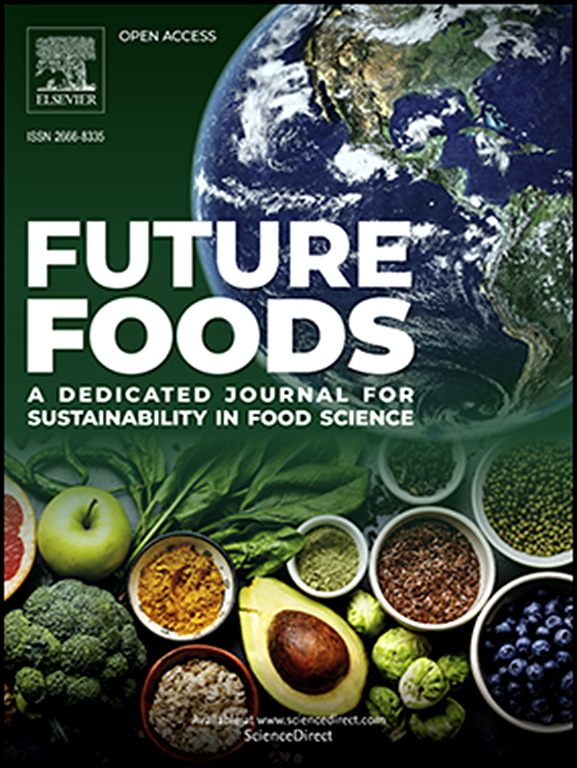利用水果颜色和机器学习预测鲜食葡萄采后的体重下降和质地变化
IF 8.2
Q1 FOOD SCIENCE & TECHNOLOGY
引用次数: 0
摘要
准确预测采后品质对于优化贮藏和减少鲜食葡萄的损失至关重要。本研究探讨了水果颜色参数作为采后体重减轻和质地变化的非侵入性指标的潜力。利用卷积神经网络(cnn),我们开发了基于比色数据的预测模型,实现了高精度(R²>;0.80为减重和R²>;0.97纹理)。此外,研究人员还研究了储存温度对葡萄品质的影响,发现3°C的低温储存比10°C的低温储存能显著减少葡萄的重量损失,并能更好地保持葡萄的质地。在试验品种中,与“火焰无籽”相比,“Shine Muscat”表现出更低的重量损失和更好的质地稳定性。这些发现突出了将基于颜色的评估和机器学习模型整合到收获后监测中的潜力,为改善葡萄行业的质量控制和存储管理提供了一种实用的方法。本文章由计算机程序翻译,如有差异,请以英文原文为准。
Predicting postharvest weight loss and texture changes in table grapes using fruit color and machine learning
Accurately predicting postharvest quality is crucial for optimizing storage and reducing losses in table grapes. This study explores the potential of fruit color parameters as non-invasive indicators of postharvest weight loss and textural changes. Using convolutional neural networks (CNNs), we developed predictive models based on colorimetric data, achieving high accuracy (R² > 0.80 for weight loss and R² > 0.97 for texture). Additionally, the effects of storage temperature on grape quality were examined, revealing that colder storage at 3°C significantly reduces weight loss and maintains texture better than storage at 10°C. Among tested cultivars, ‘Shine Muscat’ exhibited lower weight loss and superior textural stability compared to ‘Flame Seedless’. These findings highlight the potential of integrating color-based assessments and machine learning models into postharvest monitoring, offering a practical approach for improving quality control and storage management in the grape industry.
求助全文
通过发布文献求助,成功后即可免费获取论文全文。
去求助
来源期刊

Future Foods
Agricultural and Biological Sciences-Food Science
CiteScore
8.60
自引率
0.00%
发文量
97
审稿时长
15 weeks
期刊介绍:
Future Foods is a specialized journal that is dedicated to tackling the challenges posed by climate change and the need for sustainability in the realm of food production. The journal recognizes the imperative to transform current food manufacturing and consumption practices to meet the dietary needs of a burgeoning global population while simultaneously curbing environmental degradation.
The mission of Future Foods is to disseminate research that aligns with the goal of fostering the development of innovative technologies and alternative food sources to establish more sustainable food systems. The journal is committed to publishing high-quality, peer-reviewed articles that contribute to the advancement of sustainable food practices.
Abstracting and indexing:
Scopus
Directory of Open Access Journals (DOAJ)
Emerging Sources Citation Index (ESCI)
SCImago Journal Rank (SJR)
SNIP
 求助内容:
求助内容: 应助结果提醒方式:
应助结果提醒方式:


